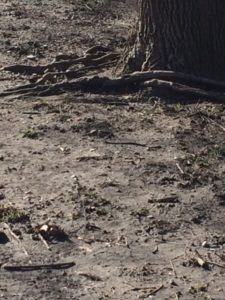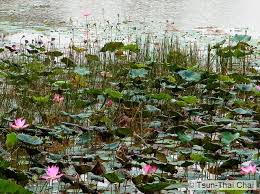 It must have rained for two days straight. At times, the raindrops pelted down and I heard them, tinny-sounding, against my windows. Even when drops didn’t come down as discreet objects, a heavy mist permeated the air.
It must have rained for two days straight. At times, the raindrops pelted down and I heard them, tinny-sounding, against my windows. Even when drops didn’t come down as discreet objects, a heavy mist permeated the air.
There wasn’t a sidewalk that didn’t terminate at the nearest street in a sort of lake and even walking to the parking pad behind my building involved planning where I planted each footstep so that my feet would not get soaked on the way to my car.
I hung an old gray towel in the entryway to my building, acknowledging that it would be necessary to clean India’s paws after returning from a walk.
Mud was everywhere.
I noticed how I became fascinated with this; how I looked for paw prints or patterned treads from boots in splashes of mud I’d encounter on the sidewalk.
I noticed that where small bites of earth had been pulled away from its core, exposed dirt became dry sooner than in places where larger craters had been scooped out.
I noticed discarded cans, candy wrappers, and small branches stuck in the mud. It seemed that people were much less apt to clear these things out of the way. An expedition to pick up incidental refuse would surely lead to messing up your shoes.
Mud is innocuous enough when you think about its composition. It’s just earth and water. But it carries it’s own unique danger. It marks anything that comes close. Upon contact, it defines what it touches. Things become muddy.
It’s a symbol, of sorts, of gluttony. When I see mud in abundance, I think about how a lawn or garden is trying to take in more water than it can swallow and absorb.
I told my friend Carol about my recent fixation and she remarked that according to Buddhist and Eastern traditions, it’s important to remember that mud is the environment where the lotus flower grows.
As I’ve been discouraged by many of the recent political and social trends, I’ve tried to keep in mind that a certain level of messiness is necessary for positive change to take place.
In my own creative process, I’ve recognized that sometimes ideas can seem very disconnected and raw before I can put them together in any way that approaches coherence (let alone the honesty and elegance I might strive for).
But this was a notion worth taking in –- that something as beautiful as the lotus flower grows in the mud. Like a baby chick cracking its shell from the inside, the implication is that there’s a certain amount of effort necessary for something so beautiful to be born.
Life itself is mud. There are things that are unavoidable. It’s messy. And the tension itself, the struggle involved in surviving and reaching out, on its own, creates a certain kind of beauty.
Just last week, I heard that someone I had worked with a few years ago died (of breast cancer). I learned that I would get a tax refund this year. One of my projects got postponed and I might not have income for a couple weeks. A friend comp-ed me with a ticket to the symphony. I was complimented and criticized.
Thupten Ngodrup, the State Oracle of Tibet, in sharing his thoughts on the lotus, said;
“The lotus is the most beautiful flower, whose petals open one by one. But it will only grow in the mud. In order to grow and gain wisdom, first you must have the mud — the obstacles of life and its suffering. … The mud speaks of the common ground that humans share, no matter what our stations in life. … Whether we have it all or we have nothing, we are all faced with the same obstacles: sadness, loss, illness, dying and death. If we are to strive as human beings to gain more wisdom, more kindness and more compassion, we must have the intention to grow as a lotus and open each petal one by one.”
Celebrating MUD is no small thing.



Leave a comment